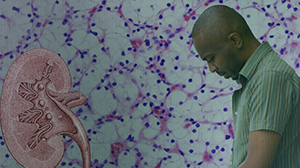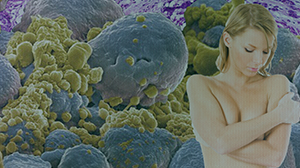NEW YORK (Reuters Health) – In locally advanced or metastatic prostate cancer, intermittent androgen deprivation (IAD) is a “feasible, efficient and safe” alternative to continuous androgen deprivation (CAD) in patients whose prostate cancer shows hormone sensitivity during induction ADT, Finnish clinicians report in a paper online now in the Journal of Urology.
In these patients, IAD did not carry a higher risk of death than CAD, Dr. Arto J. Salonen from Kuopio University Hospital and colleagues found. However, patients with the most advanced and the most aggressive prostate cancer are not candidates for IAD, they say. “PSA response for induction ADT is essential to determine patient eligibility for IAD (and for ADT, too),” Dr. Salonen told Reuters Health by email.
Between May 1997 and February 2003, 852 men with locally advanced or metastatic prostate cancer were recruited at 27 clinics in Finland to participate in the open label, randomized, controlled parallel group FinnProstate Study VII.
All recruited patients received the LHRH analogue goserelin acetate (3.6 mg) subcutaneously every 28 days for 24 weeks (run in) before randomization. To minimize flare reaction, the antiandrogen cyproterone acetate was given in 100 mg twice daily during the first 12.5 days.
The 554 patients in whom PSA decreased to less than 10 ng/mL or by 50% or more if less than 20 ng/mL at baseline were randomly allocated to IAD (274 patients) or CAD (280 patients).
“Patients with the most advanced and the most aggressive PC with high pretreatment PSA did not show adequate biochemical PSA response to ADT in our interim analysis and were not candidates for IAD (298 [35%] of 852 patients with advanced M0 or M1 PC),” Dr. Salonen told Reuters Health.
It was “surprising to some extent” that so many men were unsuitable for randomization, Dr. Salonen admitted, “because generally reported response rate for ADT in treatment of prostate cancer is approximately 80%”
In the CAD arm, patients continued with goserelin acetate or underwent bilateral orchiectomy. In the IAD arm, the LHRH analogue was withheld after randomization and was resumed, including flare protection with cyproterone acetate, for at least 24 weeks whenever PSA increased more than 20 ng/mL or above baseline and was withheld again by the same criteria as for randomization.
Of the 554 randomized patients, 392 (71%) died during a median followup of 65 months. There were 186 deaths in the IAD arm and 206 in the CAD arm (68% vs 74%; p=0.12). Prostate cancer was the cause of death in 248 cases – 117 in the IAD arm and 131 in the CAD arm (43% vs 47%; p=0.29).
The researchers report that median times from randomization to progression were longer, although not statistically so, in the IAD arm than the CAD arm (34.5 vs 30.2 months). There were no statistical differences in median times to death from any cause (45.2 and 45.7 months), to death from prostate cancer (45.2 and 44.3 months), and to treatment failure (29.9 and 30.5 months).
The researchers say they didn’t observe any significant delay in the onset of hormone resistance or improvement in overall survival. “Thus, IAD was not superior to CAD.”
In Dr. Salonen’s opinion, “IAD is a good option in treatment of advanced PC in patients whose prostate cancer shows hormone sensitivity during induction ADT.”
IAD “should be regarded as standard therapy for prostate cancer” in these patients, the study team concludes in their paper.
They also point out in the article that IAD offers economic benefit with the reduction of drug therapy costs during treatment off periods; however, patients on IAD need more careful followup while off therapy, which means extra costs to the health care system.
SOURCE:




